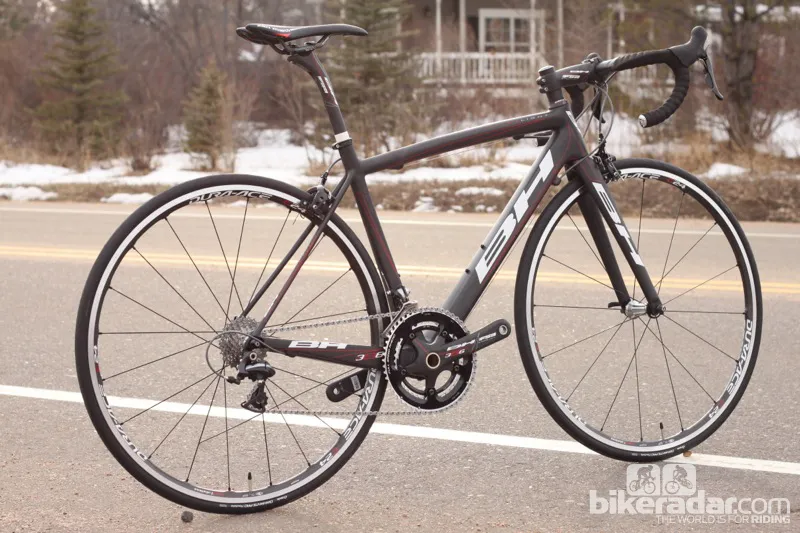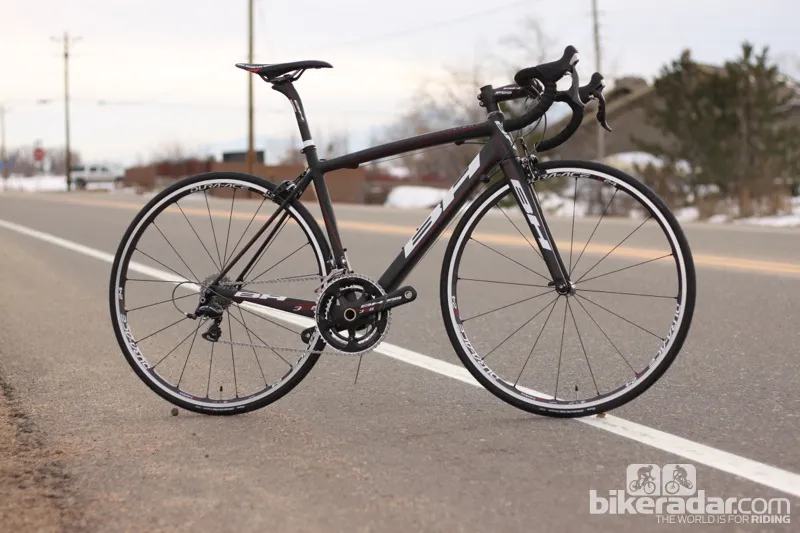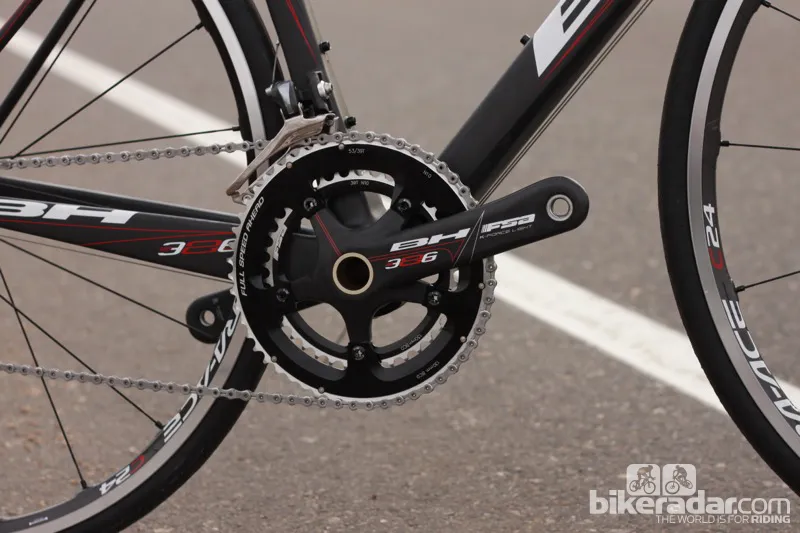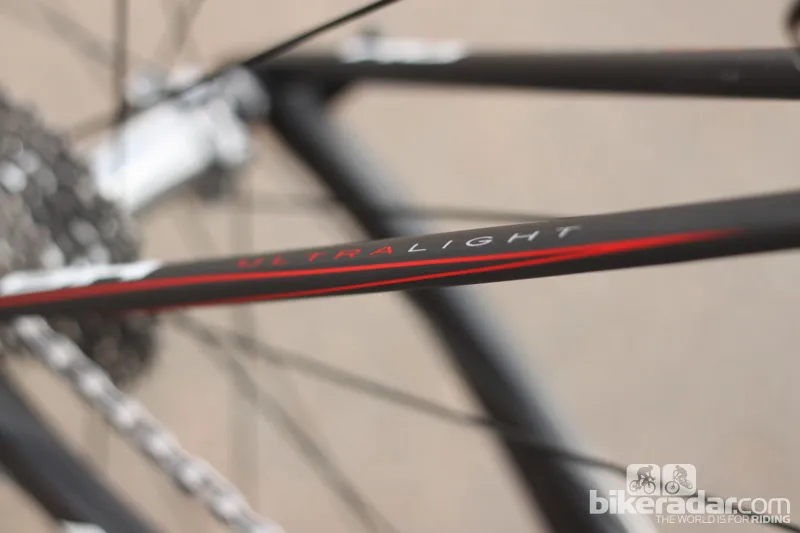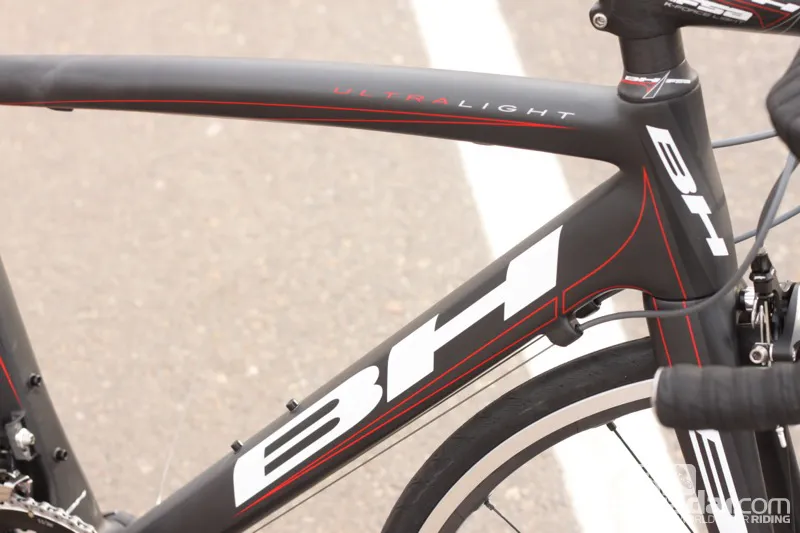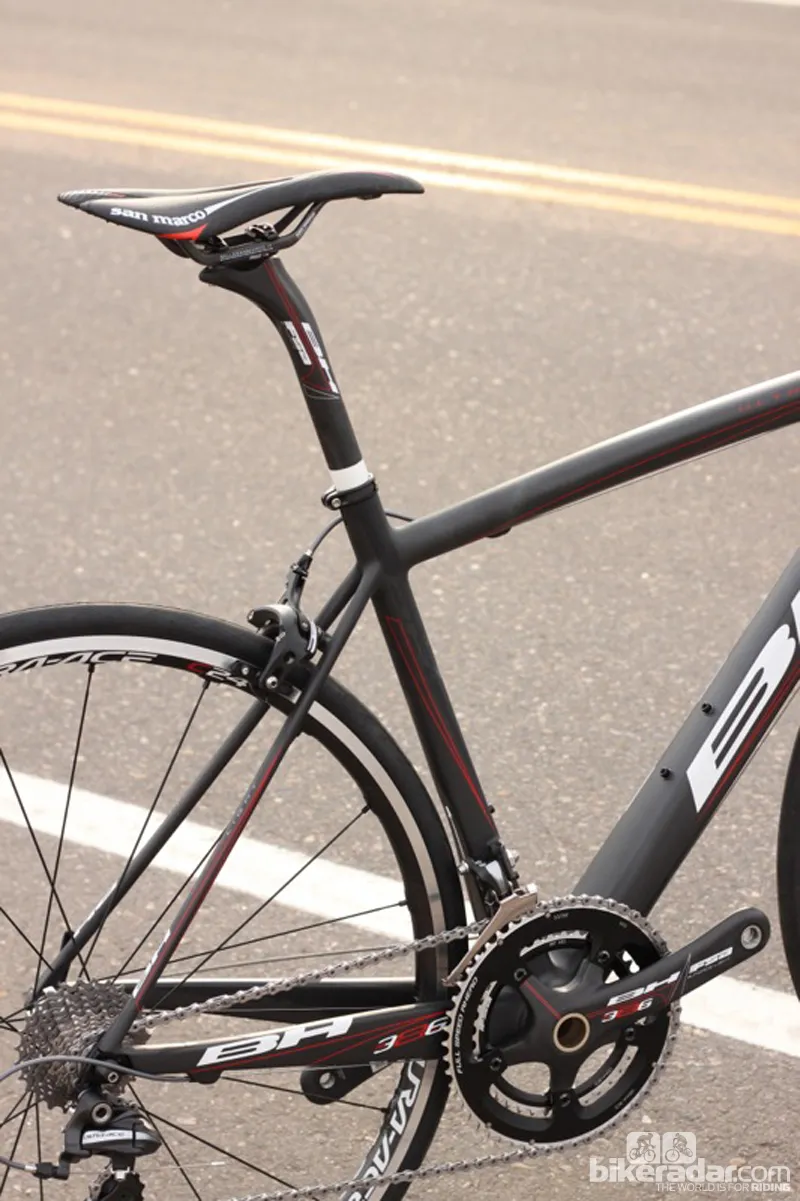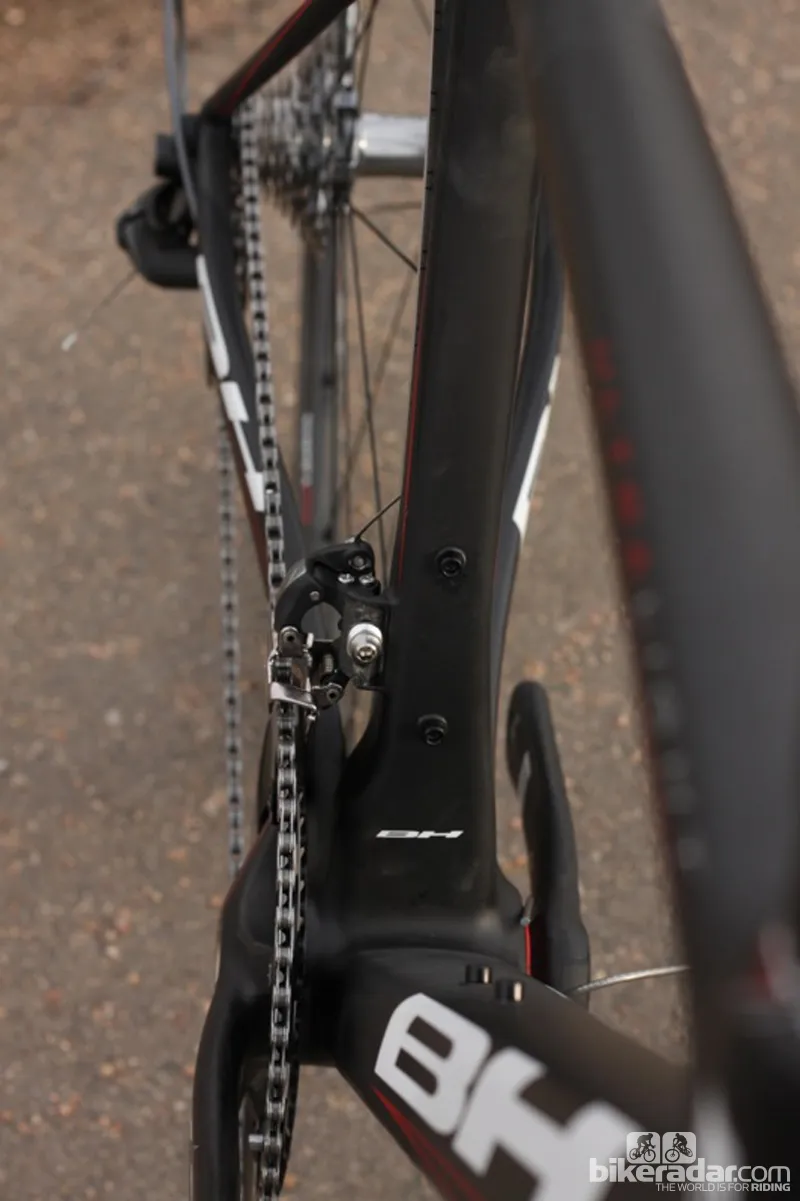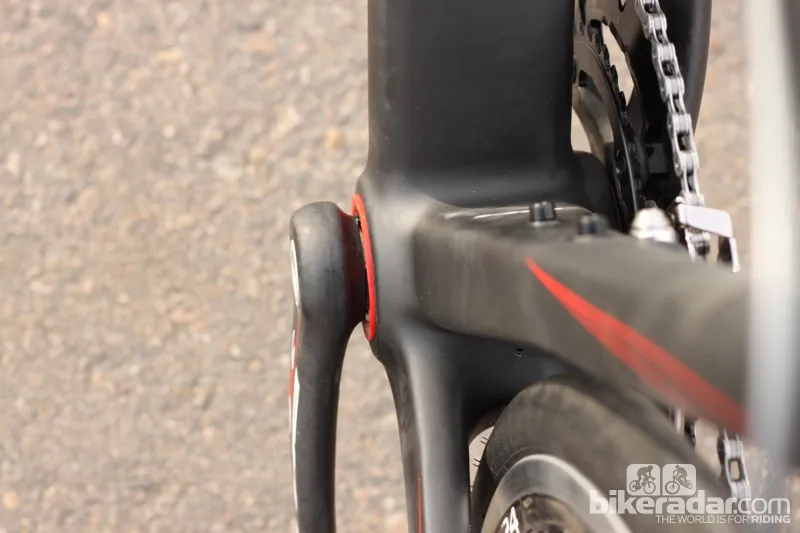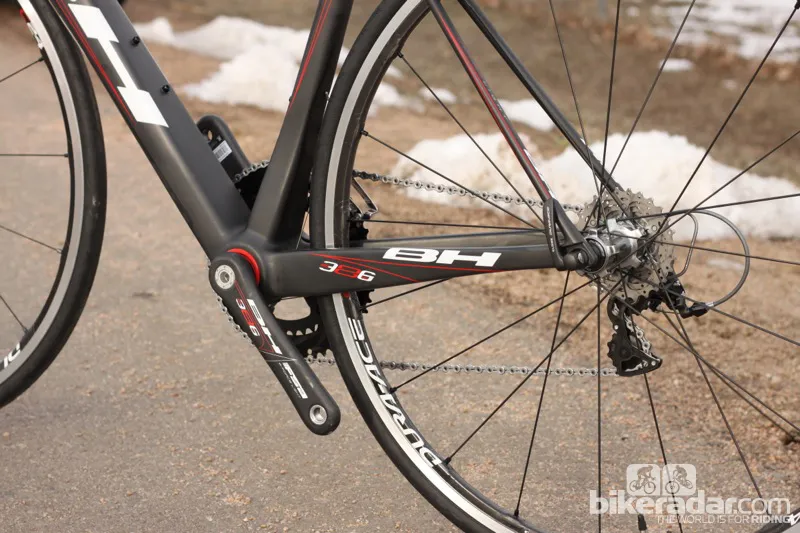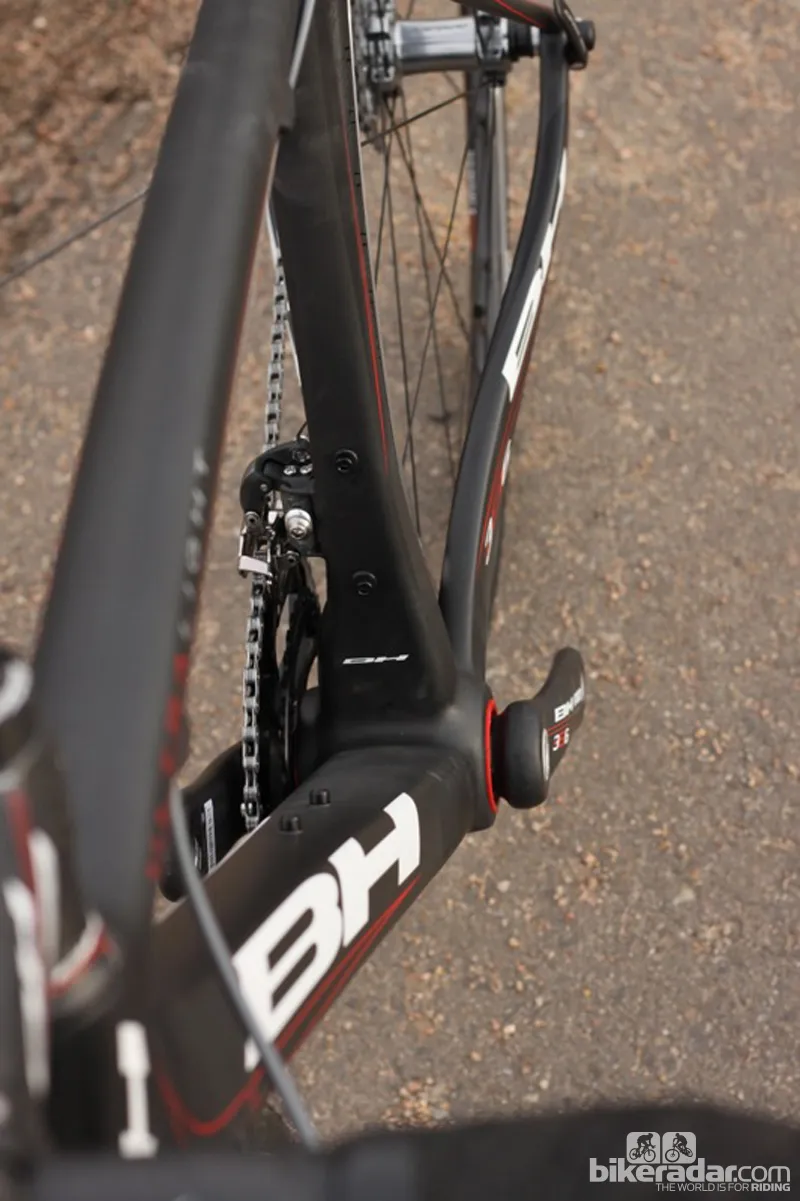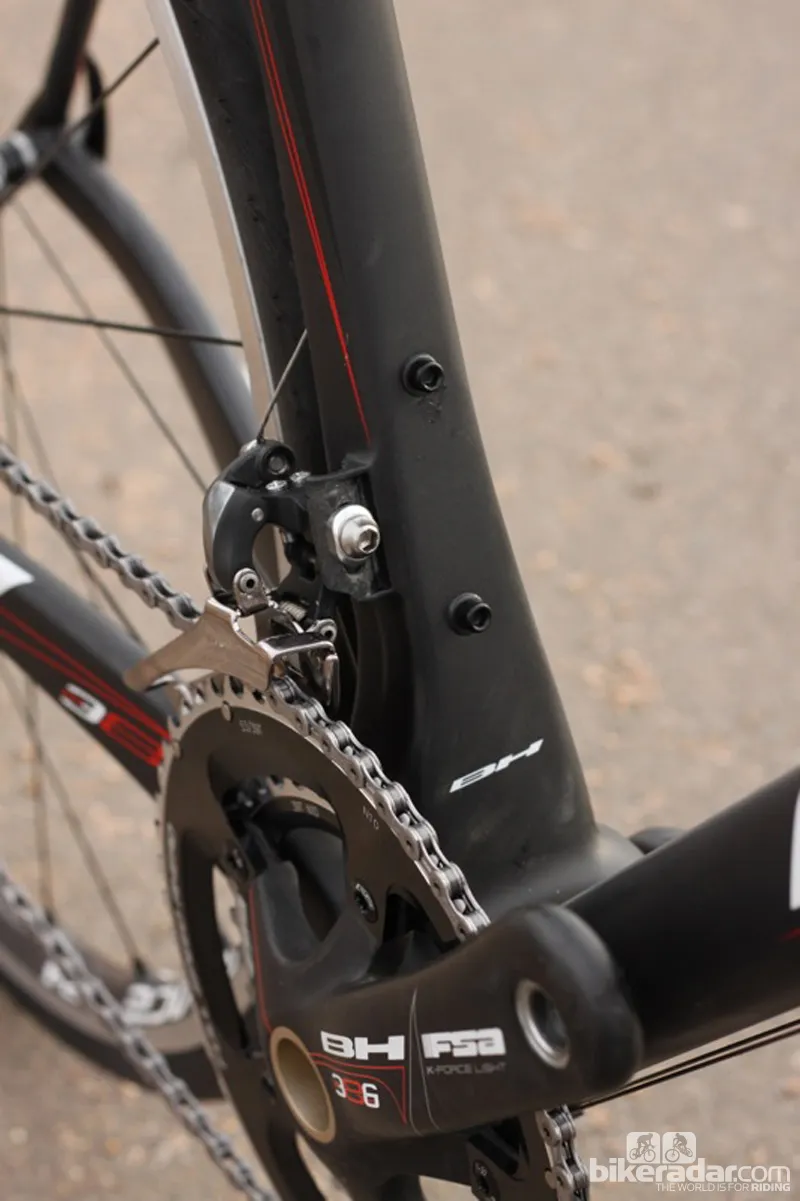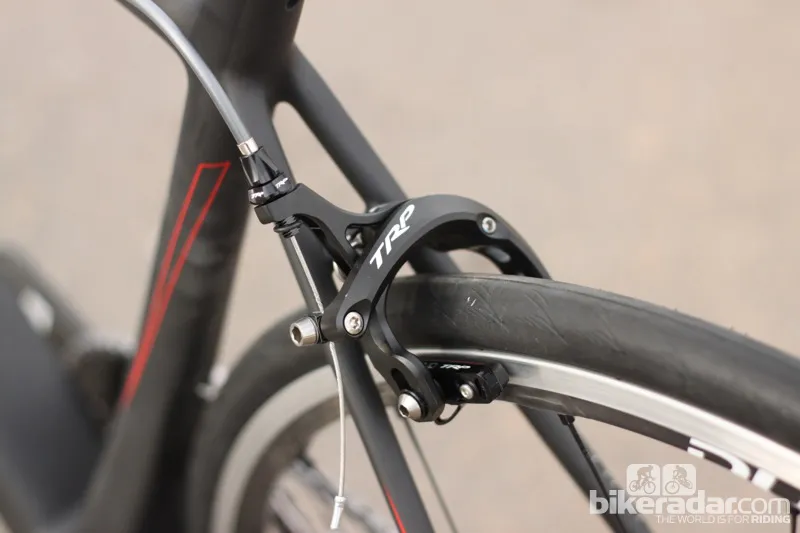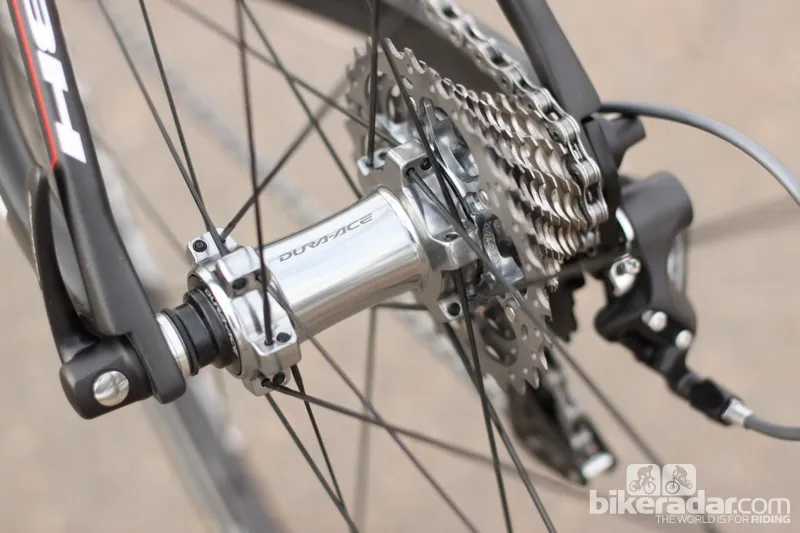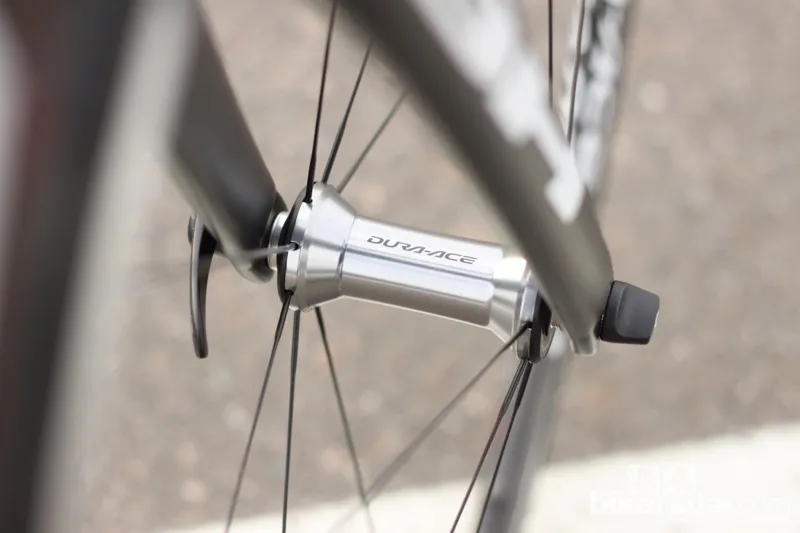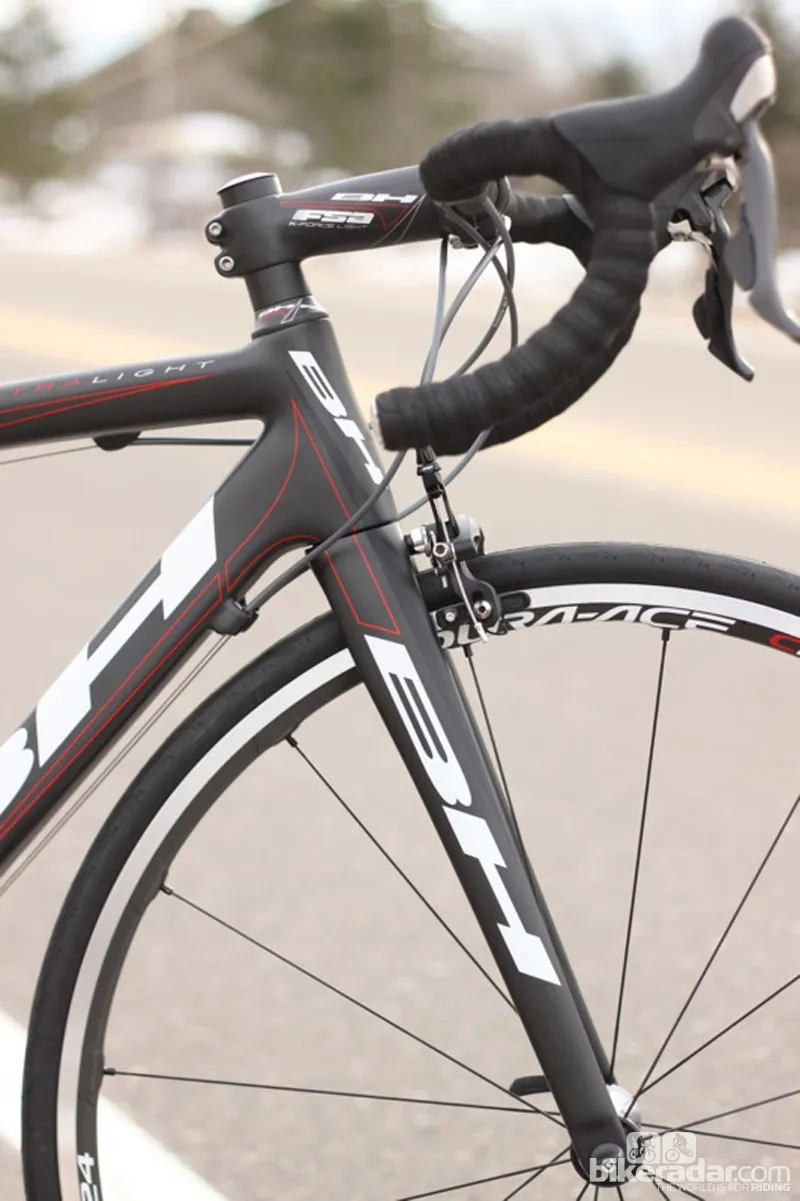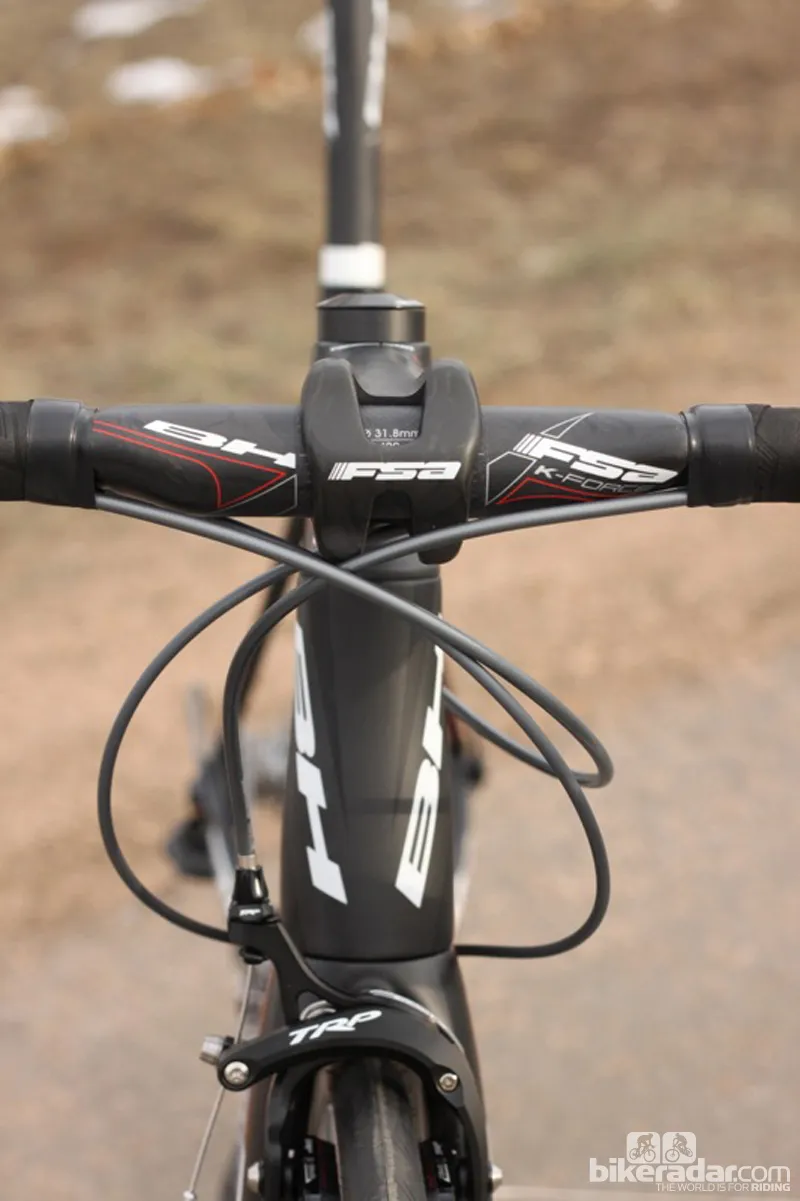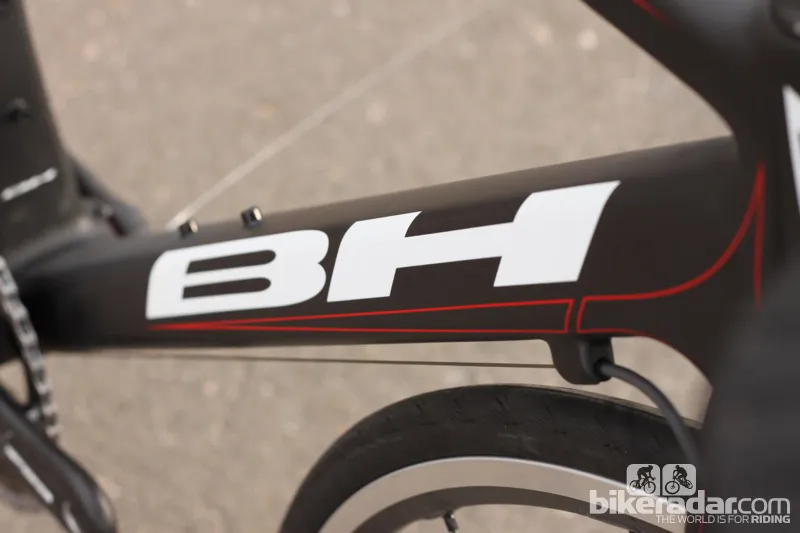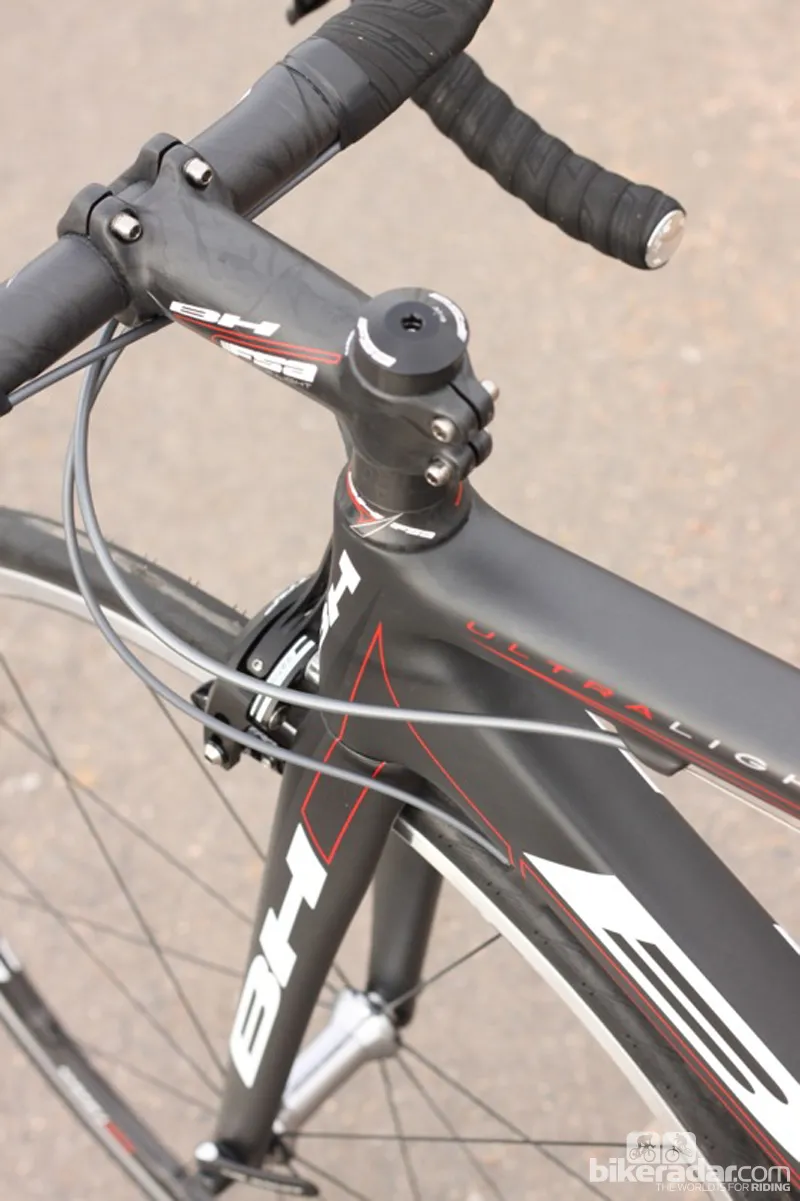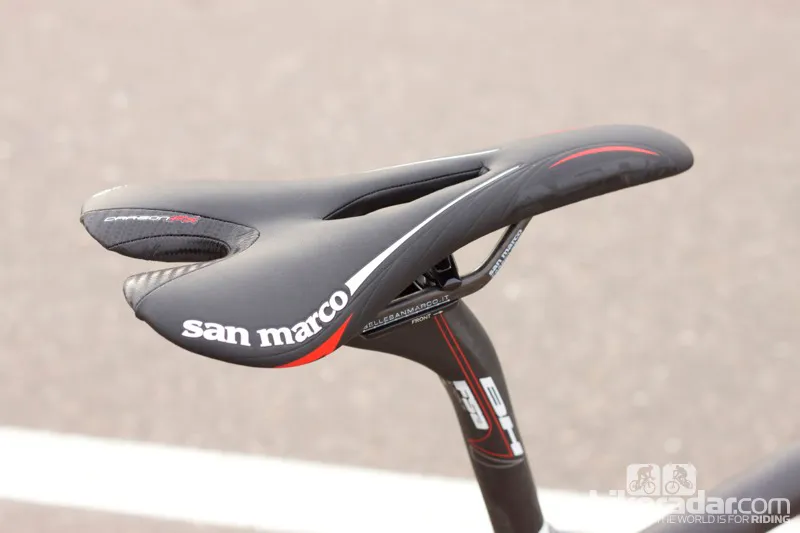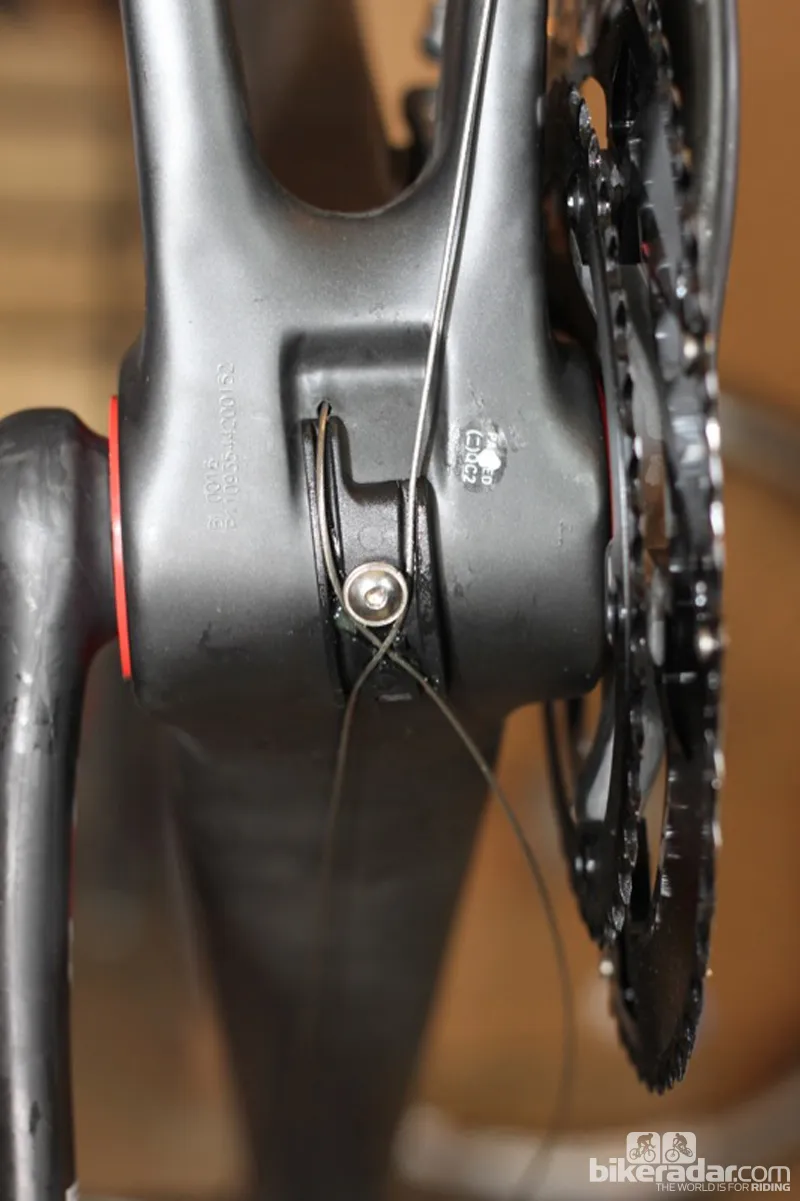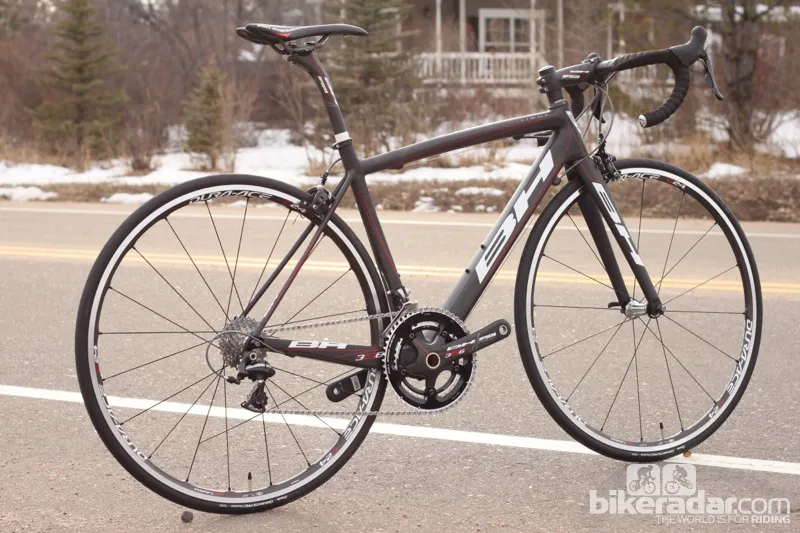This Spanish designed bike lives up to its name, with our test frame weighing in at 768g. The fork added a meager 279g to the chassis package, bringing us to just 1,047g (2.31lb) – in the same range as many manufacturer’s top-end frames.
But a light weight isn’t the only attribute a top-level bike needs to succeed. The frame must also be stiff and offer a quality ride with proven geometry. To achieve that, BH has pulled the geometry over from the Pro Tour proven G5.
Ride & handling: Surprisingly stiff and noticeably comfortable
Two things are apparent from the first pedal stroke on BH’s Ultralight. Firstly, it’s incredibly stiff through the front triangle. This equates to sharp steering and the instant-on feel when putting power into the pedals.
Secondly, the rear end of the bike is very comfortable, which you notice after a few more strokes, especially over rougher surfaces. It’s surprisingly supple, and almost a juxtaposition to the front triangle. That’s not to say the bike is unbalanced, rather that the two ends work in unison to create an adept overall ride that will surely please those seeking all-out performance.
On dirt roads and chewed up Tarmac, the Ultralight seemed to offer as much comfort as a Specialized Roubaix SL3. It dampened high frequency and, to some extent, high amplitude impacts, likely helped by the 25mm tires.
Climbing, the low 6.23kg (13.8lb) weight was noticeable, as was the bike’s stiff pedaling platform. Heading down mountainous descents, the Ultralight preformed expertly too. The stiff front end offered incredible steering precision and great feedback under hard cornering.
One area in which the bike was lacking was on long straight-line descents, where top speed became more a function of gears and guts rather than skill and precision. The bike felt slightly skittish, and though this wasn’t a deal breaker we couldn’t really nail down the cause – the angles aren’t that sharp, nor is the wheelbase short enough to question.
Frame & equipment: High-end materials and a 386 Evo BB and crankset
The Ultralight uses high-quality carbon fiber that’s blended with proprietary Formula 1 designs and unique hollow core molding techniques, allowing for the best possible compaction. This allows BH to put carbon precisely where it’s needed, enabling them to minimize the total amount used and keep weight down.
BH also says its molding technique makes for frames that come out of the mold in near-perfect condition, reducing the need for post-molding finishing work. The company also says it’s the layup design and testing that go into the carbon structure that make the Ultralight handle so well.
As for the frame’s design, it incorporates unique and massive tube shapes, a tapered head tube and FSA’s new 386 Evo bottom bracket design. The latter mates a BB30 unit’s 30mm spindle to an 86.5mm bottom bracket shell width. This gives plenty of real estate to mount a massive down tube, and adds stiffness to the crank’s spindle compared to 24mm steel units.
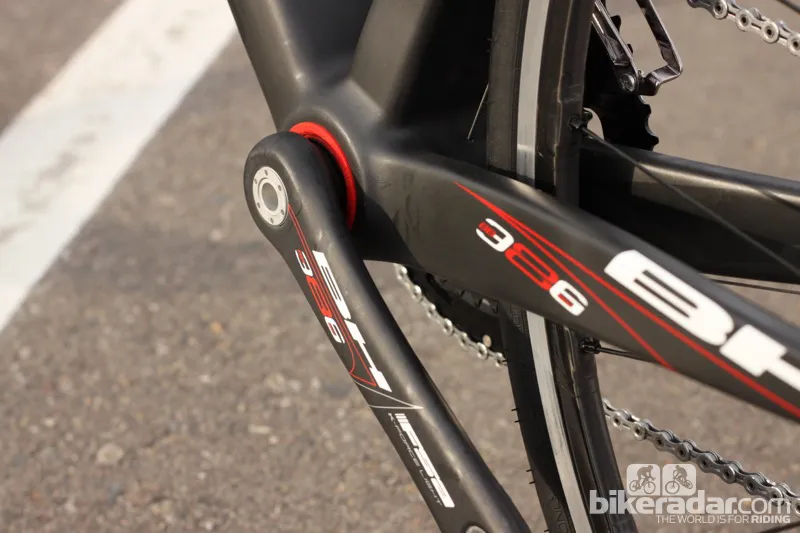
The huge chain stays on the BH Ultralight
Aside from the finished benefits of the BB386 Evo system, BH said that the larger shell size affords much better access to the bottom bracket and chainstay areas during manufacture, upping the level of precision achieved during molding.
The fork is built using the same techniques as the frame, and complements the package well. Despite its ultra low weight, it too is stiff and precise, making for a solid chassis that inspires confidence in just about every situation.
BH equips its Ultralight with a high-end but workhorse component group that’s based around Shimano’s mechanical 7900 Dura-Ace and FSA’s K-Force 386 Evo crank, which supports the wider, 30mm spindled bottom bracket system. BH has made smart choices, such as the 11-27T cassette and the inclusion of ceramic bearings.
TRP brakes support the Shimano drivetrain, and while the magnesium 970SL brakes are both less powerful and more grabby than the Dura-Ace equivalents they’ve ousted, they’re lighter and their performance is perfectly acceptable.
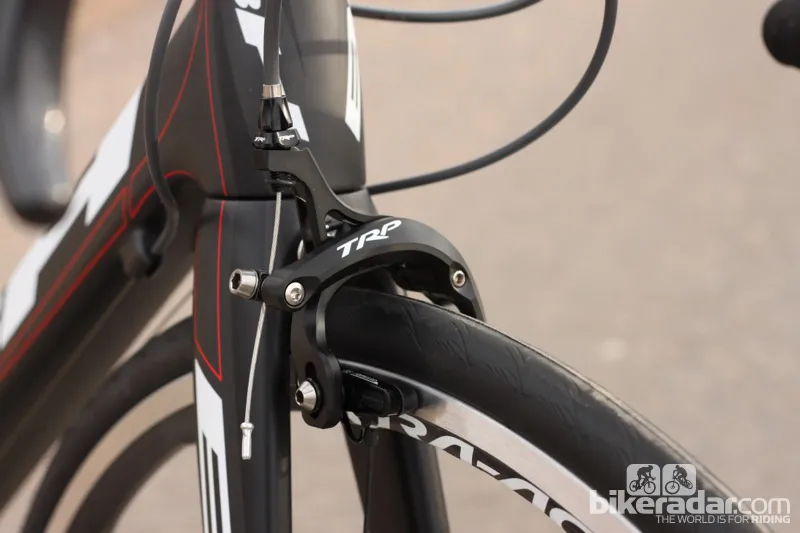
TRP’s 970SL brakes
The peripheral cockpit components are from FSA and co-branded by BH. Our only complaint lies with the rear-facing face plate screws for the stem, which make using the necessary torque wrench impossible without an added Bondhus style extension and adapter to your average wrench.
That said, with the bolts running into the face plate, if you cross-thread the bolt socket a replacement face plate is far cheaper than a completely new stem.
The wheelset is Shimano’s WH-7900-C24, which rides dreamily. The fact that it’s non-tubeless is offset by Vittoria’s supple 24mm Diamante Pro clinchers, which offer a similar ride to the narrower, stiffer, tubeless options out there.
